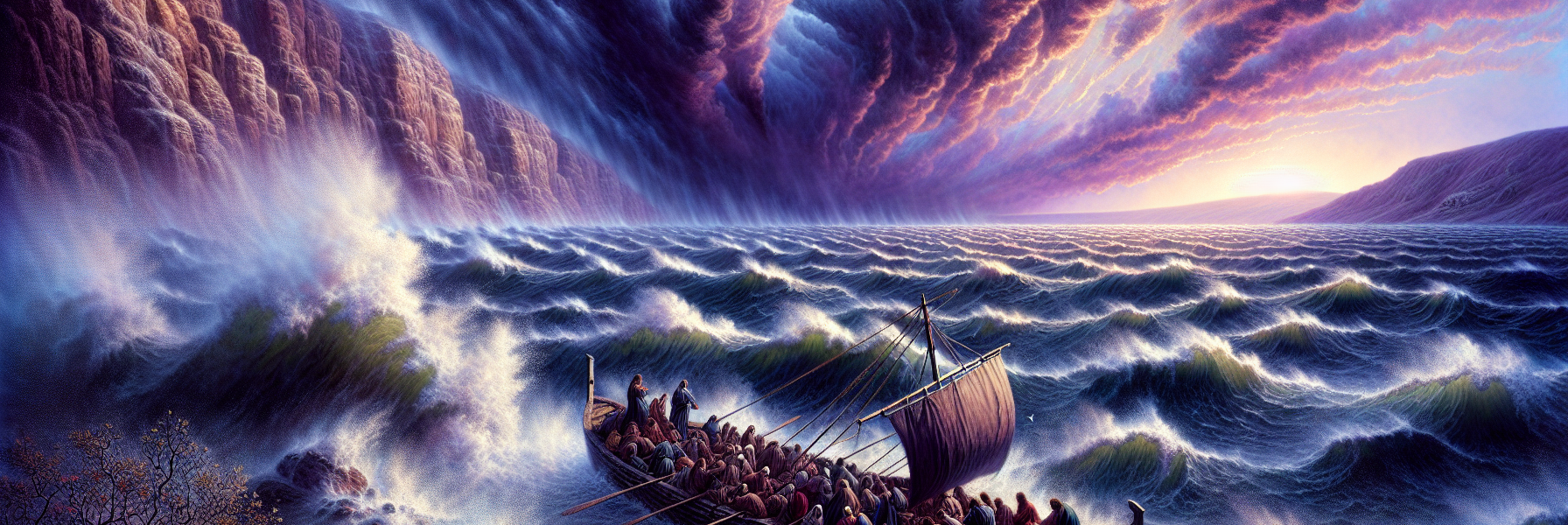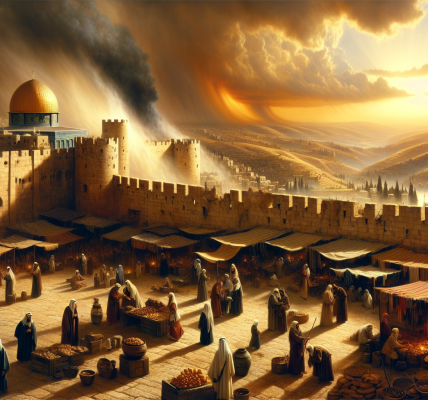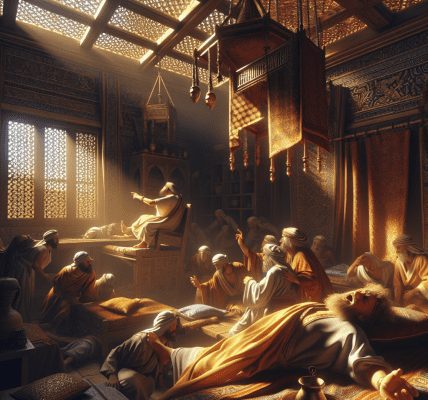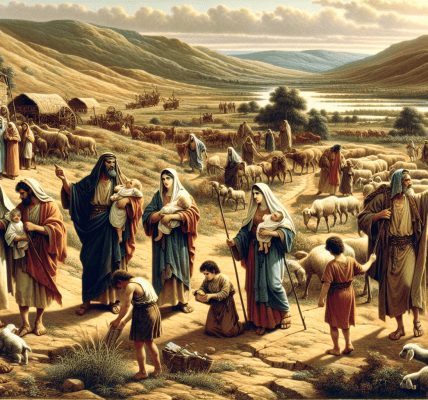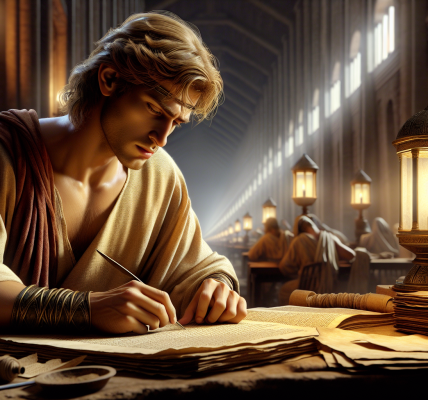The sun had long since dipped below the horizon, leaving behind a battered sky of pale purple and midnight blue. The Sea of Galilee, usually so calm in the evening, churned restlessly beneath the weight of an impending storm. The disciples, weary from the day’s work, strained against the oars as the wind howled around them, whipping the waves into foaming crests that crashed against the hull of their small fishing vessel.
It was a day of miracles, of wonders they could not comprehend. Just hours before, they had witnessed their Master, Jesus, take five loaves of bread and two fish—a paltry meal to feed a child—and multiply them in their sight. The crowds, thousands of people, had eaten until they were satisfied, and still twelve baskets of pieces were left remaining. The disciples had looked on in awe, their hearts full of wonder. Surely, this was the Messiah, the One the prophets had foretold.
But here, in the darkness, fear began to erode their resolve. The storm ran wild, and Jesus was not with them. He had stayed behind, sending the crowds away and going up the mountain to pray alone. The disciples had done as He told them and set sail for the other side, but now, as the waves pounded their boat and the wind tore through the sails, they questioned whether they would survive the night.
Then, in the darkest hour before dawn, a figure appeared on the water.
They initially thought it some illusion of the storm—a specter wrought by the wind and foam. But as the figure approached, treading the waves as though they were a firm pavement, they became more afraid. “It is a ghost!” they cried, their voices being torn from them by the gust.
But the figure spoke, and His voice cut through the tempest like a shaft of light in the night. “Take courage! It is I. Do not be afraid.”
Peter, always the reckless one, stared through the spume. “Lord, if it is You,” he cried out, “command me to come to You on the water!”
Jesus stretched out His hand. “Come.”
Without hesitation, Peter swung his legs over the side of the boat. For a breathless moment, his sandals touched the surface—and held. The wind still howled, the waves still surged, but beneath his feet, the water was as hard as rock. Step by step, he walked toward Jesus, his eyes fixed on his Master’s face.
But then another, stronger than the rest, shrieked past, and Peter’s concentration lapsed. He glanced down at the foaming water, and for an instant, doubt seized him. His equilibrium failed, and with a cry, he tumbled into the depths.
“Lord, save me!” he shouted, the water closing over his head.
Simultaneously, Jesus reached out and grasped Peter’s arm and pulled him up. “You of little faith,” He scolded, His voice gentle but firm. “Why did you doubt?”
When they returned to the boat, the wind ceased. The waves subsided to a gentle lap, and the disciples, drenched and trembling, fell to their knees in worship. “Truly,” they whispered, “You are the Son of God.”
The first light of dawn touched the horizon as the boat drifted to the shore. And though the storm had passed, the lesson remained—etched in their hearts like the words of the prophets of old. In the darkest night, in the worst tempest, the Savior was near. All they had to do was keep their eyes on Him.
And so, with the sun of morning warming their backs, they sailed again—on to the next miracle, the next trial, the next phase in the journey of faith.
